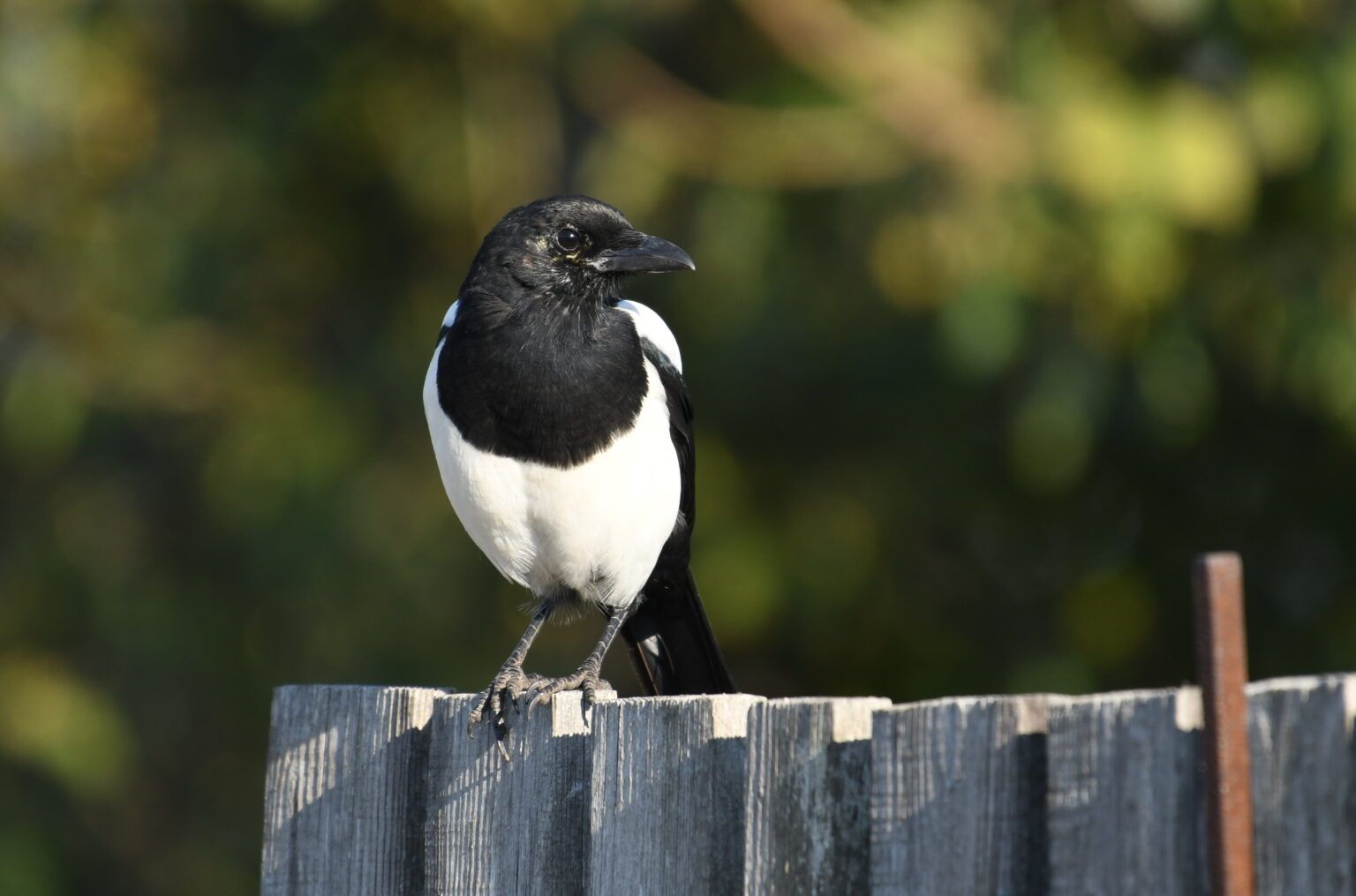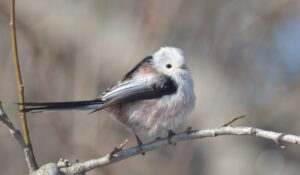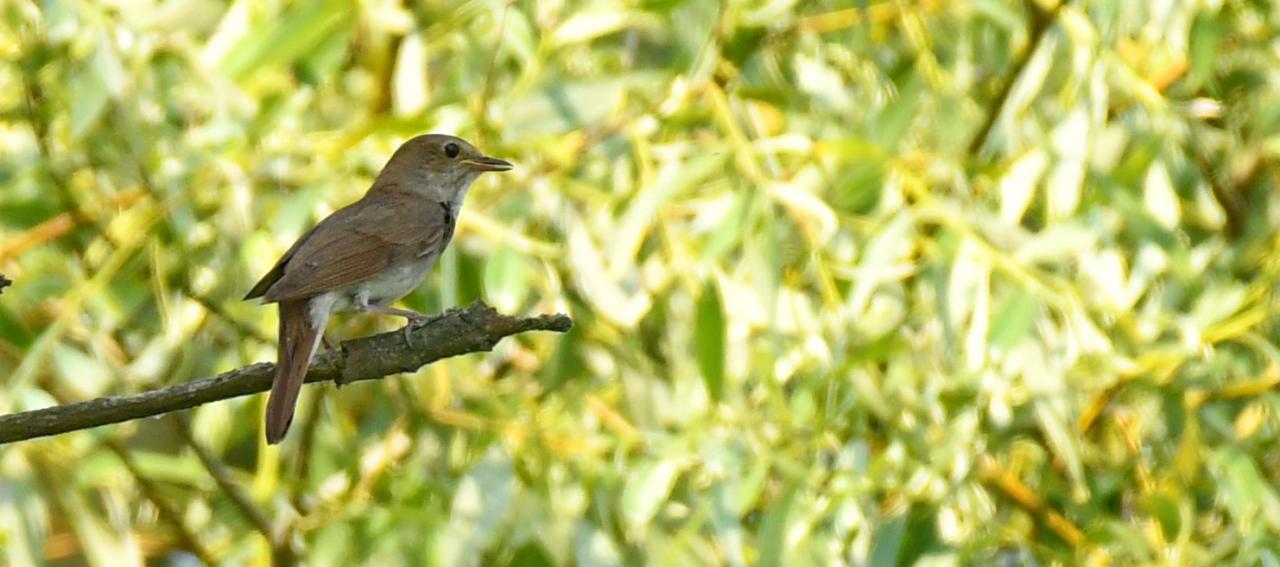The Eurasian Magpie, European Magpie, or Common Magpie (Pica pica) is a resident breeding bird throughout Europe, much of Asia and northwest Africa. It is one of several birds in the crow family named as magpies, and belongs to the Holarctic radiation of “monochrome” magpies. In Europe, “Magpie” is used by English speakers as a synonym for the European Magpie; it is the only magpie in Europe outside the Iberian Peninsula.
The Eurasian Magpie is one of the most intelligent birds, and it is believed to be one of the most intelligent of all animals. The expansion of its nidopallium is approximately the same in its relative size as is found in chimpanzees, orangutans and humans.
There are numerous subspecies. The northwest African race differs in having a patch of blue bare skin around the eye, no white patch on the rump and an unglossed tail. The southwest Arabian race differs in being smaller, with dull black plumage lacking iridescent tones, and minimal white in the wings. The Siberian races have more extensive white in the wings, and brilliant green iridescence; Korean birds have a purple gloss instead and relatively longer wings and a shorter tail.
Analysis of mtDNA sequences has indicated that the Korean race, P. pica sericea, is very distinct from the other Eurasian forms, and may be a separate species. The North American Black-billed Magpie which looks almost identical to the Eurasian form and was previously considered conspecific is genetically closer to the Yellow-billed Magpie. The main Eurasian lineages of this astoundingly variable species have not been sufficiently sampled to clarify the status of such forms as the northwest African race P. p. mauretanica and the southwest Arabian race P. p. asirensis, which could also be distinct species.
A larger palaeosubspecies of the European Magpie was described as Pica pica major.
The common name comes from magot pie (pied Margot), first found in Shakespeare’s Macbeth. The scientific name Pica is just the Latin word for Magpie. When Linnaeus first described this species in 1758, he named it Corvus picaThe Eurasian Magpie is 44–46 centimetres (17.3–18.1 in) in length – in the adult over 50% of this is tail – and a wingspan of 52–62 centimetres (20–24 in). Its head, neck and breast are glossy black with a metallic green and violet sheen; the belly and scapulars (shoulder feathers) are pure white; the wings are black glossed with green or purple, and the primaries have white inner webs, conspicuous when the wing is open. The graduated tail is black, shot with bronze-green and other iridescent colours. The legs and bill are black.
The young resemble the adults, but are at first without much of the gloss on the sooty plumage. The male is slightly larger than the female.
The Eurasian Magpie is a distinctive species with pied plumage, long 20–30 centimetres (8–12 in) graduated tail, and loud chatter. When passing in open country they rapidly move their wings and chatter. Upon landing the long tail is elevated and carefully carried clear of the ground.
Like other corvids such as crows, the Magpie usually walks, but can also hop quickly sideways with wings slightly opened. They are fond of bright objects
The Magpie is omnivorous, eating young birds and eggs, insects, scraps and carrion, acorns, grain, and other vegetable substances.
Magpies are common in suburban areas but tend toward shyness and caution in the country. They only avoid humans when harassed. Sometimes two or more birds appear to “tease” other animals, such as cats, a behaviour thought to scare away potential predators and egg thieves.
In winter Magpies often form groups, feeding and roosting at night. Early in the year large numbers gather for mating in groups Charles Darwin described as “marriage meetings”.
Magpies have been observed taking small songbirds in flight, a behaviour once thought unique to birds of prey.
Magpies are territorial and stay in theirs all year, even in the north of the species range. The pairs are monogamous and remain together for life, finding new partners from the stock of yearlings if one is lost.
Mating takes place in spring. In the courtship display males rapidly raise and depress their head feathers, uplift, open and close their tails like fans, and call in soft tones quite distinct from their usual chatter. The loose feathers of the flanks are brought over the primaries, and the shoulder patch is spread so the white is conspicuous, presumably to attract females. Short buoyant flights and chases follow.
Magpies prefer tall trees for their bulky nest, firmly attaching them to a central fork in the upper branches. A framework of the sticks is cemented with earth and clay, and a lining of the same is covered with fine roots. Above is a stout though loosely built dome of prickly branches with a single well-concealed entrance. These huge nests are conspicuous when the leaves fall. Where trees are scarce, though even in well-wooded country, nests are at times built in bushes and hedgerows.
Eggs are typically laid in April, five to eight is normal though as many as ten have been recorded. Small for the size of the bird, they are typically blue-green with close specks and spots of brown and grey, but show much variation in ground and marking. Only one brood is reared unless disaster overtakes the first clutch.
The Eurasian Magpie is believed not only to be among the brightest of birds but among the most intelligent of all animals. Magpies have been observed engaging in elaborate social rituals, possibly including the expression of grief.Mirror self-recognition has been demonstrated in European magpies, making them one but a few species and the only non-mammal known to possess this capability. The cognitive abilities of the Eurasian Magpie are regarded as evidence that intelligence evolved independently in both corvids and primates. This is indicated by tool use, an ability to hide and store food across seasons, episodic memory, using their own experience to predict the behavior of conspecifics. Another behavior exhibiting intelligence is cutting their food in correctly sized proportions for the size of their young. In captivity magpies have been observed counting up to get food, imitating human voices, and regularly using tools to clean their own cages. In the wild, they organise themselves into gangs and use complex strategies hunting other birds and when confronted by predators. Along with the Jackdaw, the Eurasian Magpie’s nidopallium is approximately the same relative size as those in chimpanzees and humans, significantly larger than the gibbon’s. Like other corvids, such as Ravens and Crows, their total Brain-to-body mass ratio is equal to most great apes’ and cetaceans.’
In European folklore the magpie is associated with a number of superstitions surrounding its reputation as an omen of ill fortune. This reputation may derive from the bird’s widely believed tendency to “steal” shiny objects or its aggressive behaviour toward favoured songbirds.
In the 19th century book, A Guide to the Scientific Knowledge of Things Familiar, a proverb concerning magpies is recited: “A single magpie in spring, foul weather will bring”. The book further explains that this superstition arises from the habits of pairs of magpies to forage together only when the weather is fine. In Scotland, a magpie near the window of the house foretells death.
In both Italian and French folklore, magpies’ penchant for picking up shiny items is thought to be particularly directed towards precious stones. Rossini’s opera La gazza ladra and The Adventures of Tintin comic The Castafiore Emerald are based on this theme. In Bulgarian, Czech, German, Hungarian, Polish and Swedish folklore the magpie is also seen as a thief. In Sweden it is further associated with witchcraft. In Norway, a magpie is considered cunning and thievish, but also the bird of huldra, the underground people.
In the British Isles a widespread traditional rhyme, One for Sorrow records the myth (it is not clear whether it has been seriously believed) that seeing magpies predicts the future, depending on how many are seen. There are many regional variations on the rhyme, which means that it is impossible to give a definitive version.
La gazza ladra (The Thieving Magpie) is an opera in two acts by Gioachino Rossini. The very distinctive overture is well known.
A British children’s TV show called Magpie featured a theme song based on the “one for sorrow” rhyme, and featured a large cartoon Magpie as its mascot or logo. Magpie (Margaret Pye) is the name of a villain in DC Comics known for her grating voice and penchant for stealing shiny objects.[citation needed] In Marvel’s Journey into Mystery, Loki’s former soul turns into a magpie to follow his reborn self.[22][citation needed] American rock group Counting Crows released the single “A Murder of One” in 1995 from the album August and Everything After. The song contains version A (per this article) of the Magpie rhyme.[citation needed]
Three English football clubs, Notts County, Maidenhead United and Newcastle United are nicknamed “The Magpies” due to their black and white striped playing kits. Notts County’s club crest depicts a football on which perch two magpies. Thieving Magpie, named after the Thieving Magpie Overture, is a popular card in the trading card game Magic: the Gathering. In target shooting the score for a shot striking the outermost division but one is called a “magpie” because it was signalled by a black and white flag.
Bishops were formerly called “magpies” in humour or derision because of their black and white vestments.
Lawyers as vultures, had soared up and down; / Prelates, like Magpies, in the Air had flown.–Howell’s Letters: Lines to the knowing reader.
photo : Mihai BACIU







